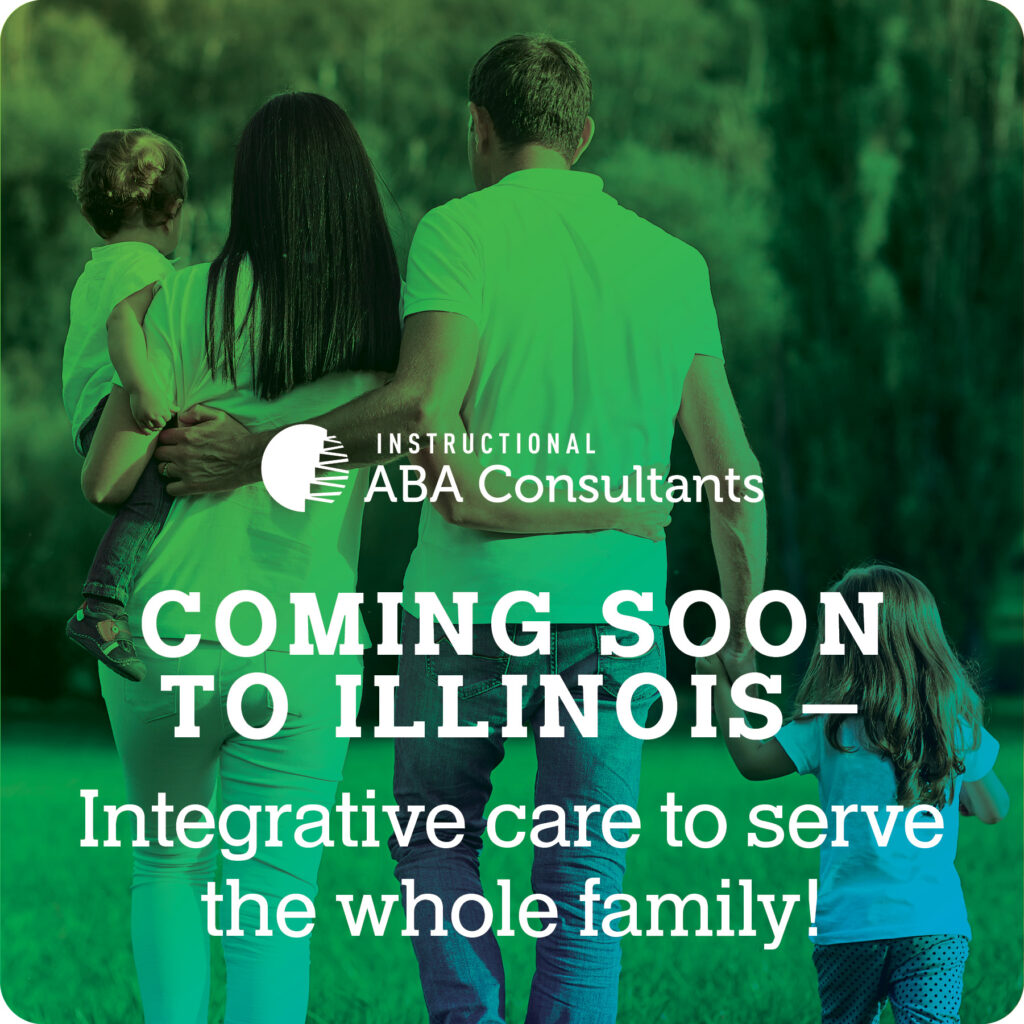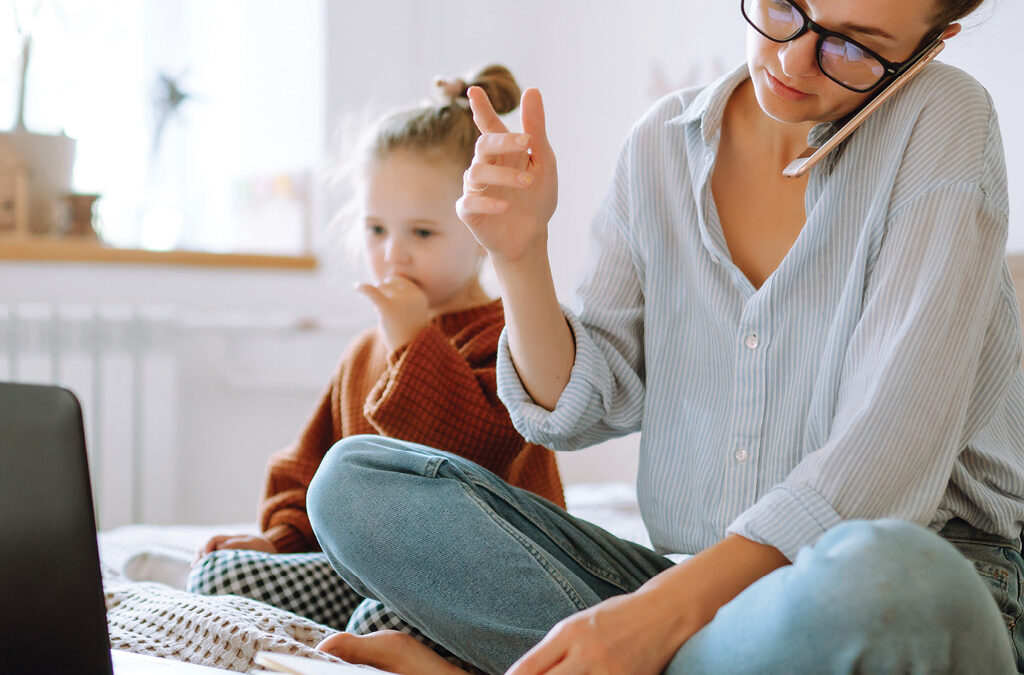
by Jessie Cooper | Aug 31, 2023
It’s been almost two months since I’ve written, that’s a record for me since I began these blogs nearly three years ago. It has always been my deep hope that my writing brings you a little closer to yourself. That’s why writing this past summer became impossible for me. You see, in order to write about living in a way that you’re in touch with yourself, I have to be in touch with myself. This summer I kept telling my friends when I would finally get around to seeing them, “I haven’t seen me either!” Just yesterday I was setting up our pool, filling my cart with Truly’s and popsicles to welcome summer. Yet somehow today I’ve sent two of my boys off to school with summer on our heels. I think if I had written to you this summer it would have been in memos and thumbs up. “We’re still here, everything’s A-Okay, shit; things aren’t okay, never mind, we’re fine…”
When Busy Takes the Wheel
Has that ever happened to you? Have you been in a spot in life where hearing yourself seems impossible? Where the demands of your life or the pleasure you choose (like summer vacations) become your driving force? I am certain in modern America we have all felt this way. Three years ago I chose to move from the suburbs of Chicago to the country of Ohio to denounce a bustling life the best I could. This summer I felt guilty for not leading by example. In the years that I’ve spent writing, I’ve also lived and breathed in a new way that I am always excited to share, even when my life was hard in impossible ways. Slipping into busy felt off-kilter from my integrity. Then I remembered that the human experience has seasons. Even if being busy isn’t what I would choose, it doesn’t mean I did anything wrong. Know darling, if busy is running your life that you’re doing anything wrong either.
Do you ever feel this way? That life has slipped into the driver’s seat and all of a sudden it’s demands are somehow the boss of you? I know many of my girlfriends feel this way about back-to-school more than the summer months. Their children are brimming with activities they love which means dinner gets crunched in at 4:00 for nine months with full weekends to follow.
We all have seasons of our lives that seem to run a schedule of their own. “How then,” I asked myself, “do we stay connected to our presence and the presence of life during this type of season?” I wish I had a perfect answer for this and I don’t. I can tell you the little things I tried through our bustling summer that helped me stay connected to myself in small ways. I can also tell you what I’ve realized only came when silence greeted me when my children went back to school. I’ll share what I’ve reflected on in hopes that whatever season you are in, you find time to hear your own heart.
Taking Big Lemons to Make Tiny Lemonade
In the summer months, when I felt myself slipping away into busyness, I no longer had my self-care routine down. This is what tipped me off my axis. My usual six to seven workouts a week crumbled into weeks where walks were the best I could do. Our eating as a family teetered between eating at home, then traveling and grabbing Subway while my children scarfed McDonald’s. My daily meditation practice was replaced by praying the children would nap and oftentimes falling asleep beside them in a heap of exhaustion. Choosing my schedule at work, where I know I’m most productive, got squeezed into child-free moments. My workout routine, the food I eat, and intentional moments of silence as well as when I work, is my self-care routine. With it swept out from under my feet I did two things every day to carry myself through.
The first thing I elected to do was to make the best choice possible daily that would bring some type of care to my being. I couldn’t look ahead to the week, but I could make small choices daily that felt in alignment with my integrity. I could make the best food choice in a moment, find small ways to move my body, and discover moments to find silence. Even if the moments of finding silence were simply standing outside with bare feet and breathing. As the days pushed me along, I tried my best to find moments of pause and to ask myself what I needed just that day. And, when there were days when no choice seemed to be available, I gave myself grace. I would hold my hand to my heart, take a deep breath, and allow myself to know that the next day I would try again. As life whirled around me, I tried in small ways to provide myself with the care I needed. This darling, is something that I want for you too. To find the small ways, in busy times that you can offer care and attention to yourself.
After I was able to accept my busyness and that small choices of care were my only option, the next thing I sunk into was gratitude. Yes, we were busy and I was out of a routine, but I was also surrounded by my children and the people we love all summer long. Our days without structure were often days surrounded by playdates, vacations, mom’s night out, family, and uninterrupted time with my boys. We were busy but we were also incredibly loved. When the work day ended and a playdate rolled up, I held my hand to my heart and whispered, “Thank you,” for the moments with our friends. If I could cook a dinner they didn’t have to, I knew that soon they would do the same for us. Holding gratitude for each tiny moment of connection kept me well-connected to their love as well as my own.
These two little things; choosing the best option at the moment and holding gratitude for the people in our lives are what carried me through my busy. When I laid my tired head to bed every night, sometimes saying hello to myself for the first time, I laid my head with gratitude and a full heart. This darling is what I wish for you in your busy days ahead. To make small choices that serve your body, soul, and spirit and to notice any type of love being offered to you. Then my darling, I want you to open your arms to that love, and whisper, “Thank you,” while offering yourself grace in your busy season.
Xoxo,
Jessie Cooper
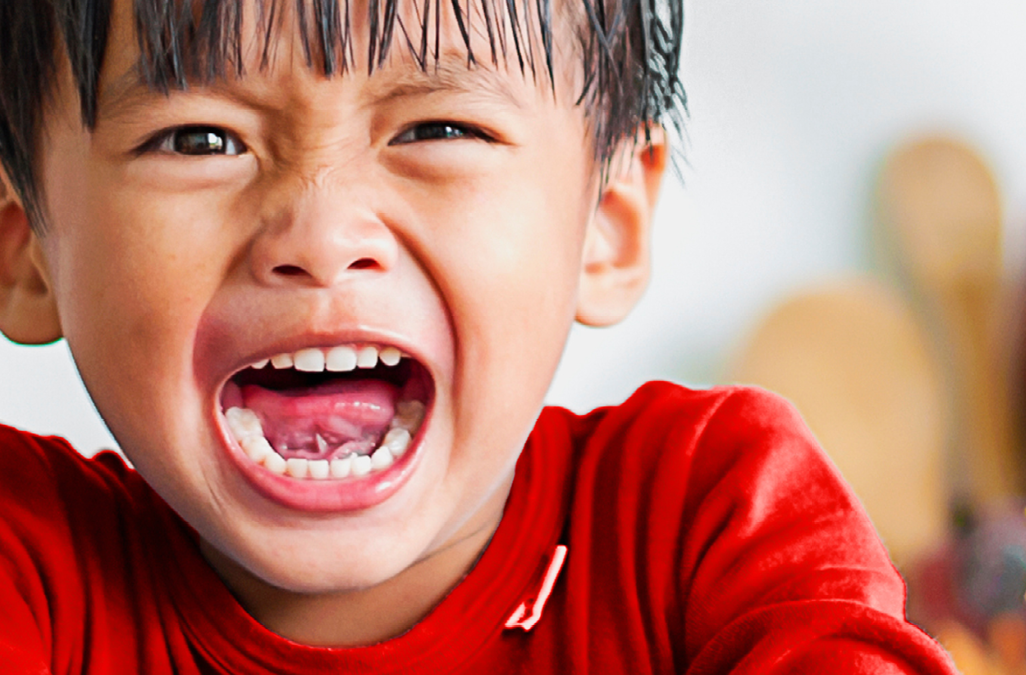
by Jessie Cooper | Jan 5, 2023
Last week I wrote to you about seeing your children’s tantrums and difficult emotions through their eyes. In it, we walked through the perspective of toddlers and young children. I offered some strategies, not all my own, to help teach our children they are safe with themselves and us as they navigate the hard emotions in life. I deeply hope it gave you some insight because emotions and behavior require language above all else. In that light, I’d like to spend some time writing to you about, well, you the parent. I know anything can look good in writing, but the reality is that parenting is not an easy job; far from it.
Let’s Get Real For a Minute
When children have big emotions, tantrums, sleepless nights, and tears with the title “mama” or “papa” we all stay completely calm right? Sailing effortlessly up at 3 am to shoo the monsters away, waking with a smile to flip pancakes, remaining calm as our dear toddler exclaims her disdain for the eleventh choice you’ve offered? We are their parents, we should and can be in control. We can model resolve for our children, discipline, and that all grown-ups are happy. I grew up in the ’90s, everyone’s parents were working through some version of this. By the time I had Henry in 2017 the new tune was “child-led everything” which required you to shadow your baby’s every move and somehow notice when they were ready for something new.
I’m really, really hopeful in writing this that you read it with the ridiculousness I intended, but also with some vulnerability to acknowledge any narrative you have that the title “parent” is having it all together. Little humans are hard. When you enter the world of parenthood in any capacity no one prepares you for the avalanche of emotions that will come with your new little (or big) human. In our minds, there is such a dream, as in any role, about what we want in our new relationship. I can admit to you I had a Pinterest board of “Henry’s Style” before he was born. By the time I was in labor with Declan I knew all I needed was my own breastmilk and baby pajamas. I also had a tribe lined up to help me with my new baby and then toddler Henry. Not knowing the level of support I needed, along with the personal trauma I was experiencing, led to my postpartum depression with Henry. With Declan’s journey in the world, I knew I had to honor my own emotions and needs.
Caring for Self and Communicating
That right there is what all parents need when it comes to the tantrums and big emotions of our little lions, um, loves. If we as parents can acknowledge that we also have big and real emotions when our children are struggling with our language we can offer ourselves support. If we don’t acknowledge how hard the emotions are for us we will find ourselves flipping pancakes with a gritted smile, losing pieces of ourselves along the way, and modeling to our children that big emotions are so scary even mommy has to push them down.
So what can we do when our emotions run high after that sleepless night, the eleventh tantrum, or (pick your own poison)? Remaining calm when our children are struggling is important. This teaches our children that when they are experiencing a big emotion we can keep them safe. The reality is that getting to this place of calm requires a lot of work on the parent’s part well before their child’s big emotions. The other reality is that inevitably all parents will not be calm at a certain point in parenting, everyone loses control of their emotions. It’s okay. Really. It’s not the loss of control that is the problem (I repeat to myself daily). It is how we respond to that loss of control that teaches our children what to do when they lose control too.
In the first reality, taking care of ourselves to remain calm can look like a variety of tools, skills, and needs for the parent. The root of this work is to acknowledge that we ourselves are emotional beings with language and behavior. In acknowledging we are emotional beings we are acknowledging that our emotional self needs love, care, time, tools, and words. It requires us to be our own biggest advocate and begin to lean into areas of our lives that either we personally struggle with or emotions that we don’t understand. In leaning into what we personally struggle with or seek to find clarity on we are providing both emotional care and accountability for ourselves. In some cases, this can be done alone in self-reflection and in other cases, this needs to be done with professional counselors. Personally speaking, I live with Complex-PTSD and the tools I’m now able to lean on in times of emotional dysregulation came through the hard work of trauma-informed care. I needed help navigating my big emotions and that is okay, it’s okay for you too.
In the second reality, I want to be very clear that if you are losing your temper and either physically or emotionally hurting your child this behavior is not okay. I can understand the loss of control, you are not a bad person if you have done this, you’re a person who has lost control and in that loss of control caused harm. The important thing here is to name that you’ve done it, offer yourself grace, and then get help as soon as possible to prevent this kind of harm from happening again. In less extreme cases that are so common among parents where we are simply at our wit’s ends, yelling happens, punishment to control our child is dished out, and wine is poured to deal with that moment a similar strategy can be used. Tara Brach used a metaphor of a U-Turn and the strategy of R.A.I.N.
When in Doubt, Let it R.A.I.N.
In this strategy, Tara teaches us to recognize, acknowledge, investigate, and nurture. We can recognize that we lost control of behavior and that our own limbic system is activated. Then, we can acknowledge the emotion behind the emotion as well that we are out of control. From there we can investigate the “why” and nurture our hearts. In this healing moment maybe we recognize that we’ve worked a sixty-hour week and have no reserves or maybe you’ve been home all day but your child’s big emotions have also been home all day. No matter the reason, naming it will guide us to the type of nurturing our bodies and hearts need.
This final strategy is the key to reclaiming your own peace as well as teaching your children the important truth that mama (or papa) is a human too. That no one is perfect and everyone has emotions and a hard time. In our home it looks a lot like this, “Wow, mommy had a tricky time and felt so overwhelmed, I’m really sorry I yelled about the coats. Can I do that differently?” Henry chimed in recently with, “Yea mama, try it kinder.” I did, we hugged, and moved on with our day.
Xoxo,
Jessie Cooper
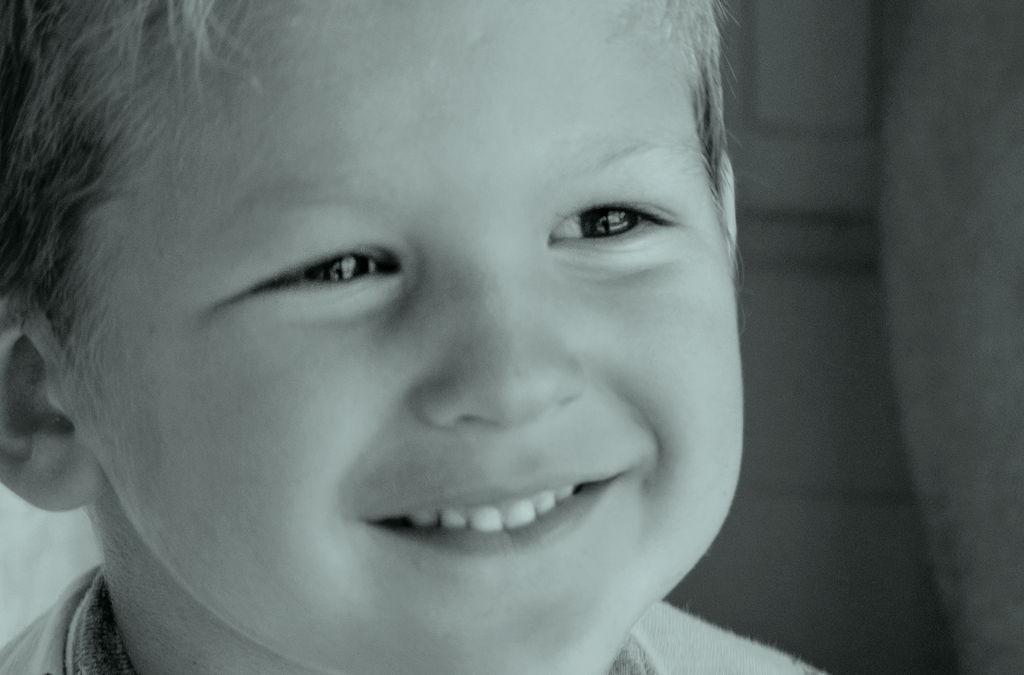
by Jessie Cooper | Dec 22, 2022
With Christmas just around the corner for those of us who celebrate (my anxiety reminds me daily), I bet you are thinking I am writing a darling tribute to their innocence. I would love to, there is so much about children that is breathtakingly beautiful. I’ve dedicated my life to researching and working with them. I can share a feel-good blog for you one day on the delight of early childhood. I’ll dig up some great quotes like, “I wish I could love anything as much as she loves bubbles,” from the movie Knocked Up. We’ll both feel very warm on the inside because writing about the positive qualities of childhood warms our souls like hot chocolate after playing in the cold snow (see, I can write it.)
However, today I want to talk about their inner emotional world, neurological development, and the frustrations that lead to big emotions. In writing, Honoring Your Peace, I wrote to you about how Dr. Becky’s book, “Good Inside,” led me to some radical shifts in my own parenting methods that I hope will guide you to find alignment in your own parenting. I did not however write to you in depth about the child’s perspective when big emotions come. I’d like the chance to share what I know both as a clinician, a mama, and a member of a brave mom tribe.
Consider Where They Are Coming From
Now that I’ve laid the foundation I will not be writing a blog about the parallels of the magic at Christmas and children and will be writing about big emotions we can begin. For today’s sake let’s start at the scene of the crime (or one of the crimes). You have a toddler, she has woken up from her sleepy slumber, opened her darling eyes, and declared she is not putting on clothing for school. As the bleary morning drags on alongside your coffee IV, she also declares she wanted oatmeal not pancakes, she only wears black mittens, and the granola bar you’ve offered so she has something in her belly on the ride to school is the wrong one. As she declares everything that is wrong she has also hit, charged you, screamed, and cried as if each “that is not a choice right now, let’s make a plan for oatmeal tomorrow,” was a declaration against her very soul. Tear-streaked (her, you… does it matter at this point?) you drive to school thinking, “goddamn that was hard” and she’s soothing herself from the injustice of the morning.
What just happened?
Well, on a very micro level a lot of different things could have happened. There could be a past pattern of you giving in to demands and now you’re setting limits so she’s rebelling against them. She could have an upset tummy. She could not have slept well last night. She could be working through a transition between co-parenting homes. All of the environmental scenarios could be very true and applied behavior analysis can tell us what is leading up to the outbursts of your darling toddler. However, regardless of what is happening environmentally the internal (covert) experience of your toddler is much broader (think macro) and common amongst the toddler tribe. She (he, they) are having big emotions that they cannot regulate and do not have words to explain their emotional world.
It Is Really A Matter of Neuroscience
You see toddlers (2-3 ½) function predominantly from their limbic system which is the part of our brain that says “fight, flight, freeze.” The part of our brain that allows us to reason is the prefrontal cortex and that doesn’t begin to develop until around age 4 and doesn’t finish developing until our early 20s (women finish their development before men, yes I just answered every question you had about your college boyfriend).
Around age 3 children also start to understand the concept of self versus others. Is this me? Do I like this? The combination of the development of self and the primary response of the limbic system creates the perfect storm inside of our toddlers. They want to assert themselves, define themselves, and know themselves. They also do not have the language yet to say what their big emotions are causing them to feel and without being taught do not have the emotional regulation to calm themselves down. This combination, as is true with most toddlers, creates a very loud couple of years for both parents and their children.
I used to be guilty as charged alongside many mamas of just wanting the tears to stop. An actual registered torture technique is to lock a mother away from her baby and play the baby’s cry. No, I do not want to know how they researched this. But anyways, when our children cry our genetics tell us, “no, awful, fix it” and we as mamas want to swoop in and fix it. Yet the swooping, beyond infancy, starts to tell our children that they cannot navigate their big emotions, and neither can we. It tells them their big emotions are wrong and have to be corrected. If there is one thing you take away from this blog, take this: big emotions live in all of us and there is nothing wrong with them. We are a feeling species, who developed language and then behaved.
Helping Toddlers and Up Navigate Emotion
So what do we do with our big feeling language-lost little humans? Starting in toddlerhood we can teach them to stay in their big emotion, ride it until it calms, keep them safe for that ride, and give them words for the experience and tools for the emotion they just felt. That their feelings are messages that something isn’t right for them and that is okay. They don’t have to agree with everything a grownup or parent says, even when a boundary is held. I spend a lot of time reframing Henry and Declan’s language of “worst day ever, I don’t like you mom!” to “Mom, I don’t agree with you.” Then I validate it’s okay to not agree with me and it’s also true that in sub-30 weather coats, hats, and mittens are a rule that has to be followed to go outside. Yes, I know, ninjas do not wear shirts little men.
Validating our children’s experiences and opinions teaches them their emotions aren’t scary. That their emotions are signals to their inner world that they need help navigating. Sometimes the world does not agree with our opinion, coats have to be worn, but it’s okay to have feelings about what we disagree with. This path is not an easy one, but it is a brave one for parents and children alike. Turning in to face our emotions instead of shaming their existence teaches children (and us) how to navigate our inner world to create an outer world that makes sense to us.
Next time your little one is having a big feeling first keep their body safe, stay the course of your boundary, and give them the words (and tools) for their experience.
Xoxo,
Jessie
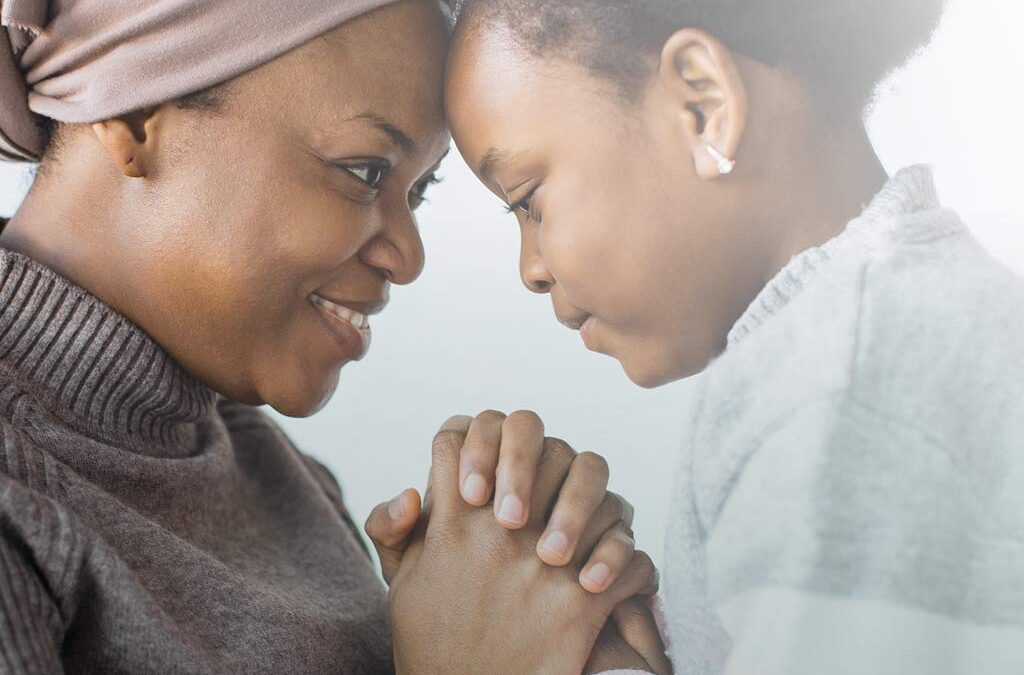
by Jessie Cooper | Nov 24, 2022
Sometime in September, I was introduced to the best-selling author Dr. Becky who recently authored the book “Good Inside.” I am trying to remember if it was on a podcast from one of my soul teachers or if it was from a friend as I complained for the millionth time about a tantrum. I honestly don’t know. It wasn’t the tantrum itself (OK sometimes it’s the tantrum itself), but it was the fact I didn’t feel I was in alignment with my own peace at the time. Last week I wrote to you about honoring your peace yet I was struggling with my own peace when my sons became dysregulated as all children do.
Of course, there are moments when I yell, when I mess up, and wish that I could have done something differently. All parents do. However, it wasn’t that I felt out of control around my children or that I was harming them in any way that made me feel out of my peace. I simply felt that there was a better way to navigate their big feelings without constantly leaning on discipline. I couldn’t find my peace in the thought, “I should be in control of my children” or “my children need to be good.” Each and every timer I set for a time-out didn’t feel like growth for them or parenting. It felt miserable. Enter Dr. Becky and her brilliant work.
Everyone Is Good Inside
In her work, Dr. Becky has one core belief she shares with her readers, “everyone is good inside.” This concept on paper felt validating of my own belief and it also triggered a lot of fears. You see holding the belief that everyone is good inside left me in relationships, extended family, and social groups well past their expiration date. Up until my early thirties (I’m 35 now…a newbie) I gave pretty much everyone a free pass while holding this belief. In creating the boundaries that have led to regaining my peace I created a new boundary to stay away from people behaving in harmful ways. Reopening this boundary felt like a hard no for me. Nope. Not doing it. But, when I look at my darling son’s faces, I know in my soul that Dr. Becky is right. We are all good inside.
Lucky for me, Dr. Becky doesn’t stop at the belief that we’re all good inside. She builds on it and teaches us how to create boundaries for our children. This felt like a relief because while it doesn’t address the boundaries I’ve built in my own life, it validated the need to uphold safety at all times. As I dove into her work and began practicing it at home a wave of peace came over me.
Dr. Becky teaches that when young children are throwing fits, having tantrums, or saying unkind words, it boils down to the fact that they are dysregulated. Not that they are disobedient, disrespectful, or bad little kids; they are good humans having a hard time. She then goes on to talk about the importance of being a sturdy leader for your children as they are dysregulated which means keeping their bodies safe. Contain the fire! Tell your children that they are allowed to feel their feelings, to disagree with you, to rage… but it is your responsibility to keep them safe.
Narrating Your Child’s Big Emotions
When the waves of dysregulation slow and my sons are able to calm down I have always talked about emotions to give language to their experience. Dr. Becky also validates this practice and writes about the importance of narrating to children their experiences after their big emotions have settled. This tiny step is the foundation of teaching children to keep their peace and that their big emotions do not define them. Instead, their big emotions are simply part of being human and they need help learning how to express them. I believe that this tiny step builds shame resilience, which in our home is a core family value as we follow the teachings of Dr. Brene Brown.
It has been about two months since I picked up “Good Inside,” and began shifting my own practices as a parent moment by dysregulated moment. I replaced time out with a “do it differently spot,” where we sit and breathe through the waves of big emotions. I began narrating what happened before the boys fell into a fit. Narrating, “you really wanted a waffle, and mommy gave you a cinnamon roll, that was tricky.” I also narrate when I am having a hard time so they do not assume any responsibility for my own stress and develop codependency. “The Pumpkin Show was loud, you wanted toys from the games we couldn’t win, and got stuck in the funhouse. Mommy was having a hard time too.” After the waves of emotions settle for all of us we settle down and I repeat, “wow, that was hard, how can we do it differently next time?”
I am not going to lie to you. You might think as you read this as you enter my house you will inhale lavender, soft music will be playing in the background, and we will all be calmly navigating our emotions while honoring our peace. Some days it is quiet here, but we are after all human, and big emotions are well known in the walls of our farm. This past Sunday by 9 am my children had broken each other’s block house, changed into two different costumes, had a do-it-different moment for hitting, requested face paint, played Candy Land, the dog got out in the back pasture, and tears flowed readily. I was short on patience and could feel myself getting snappy. At that moment I asked myself, “what are you choosing above your peace?” It was the age-old narrative that parents should be able to control their children. No thank you, not interested. I want to raise good humans who can make choices that are right for themselves and their world.
At 9:05 I called a family time out, asked Henry to pick 10 good books, and we piled into my bed to read. “Wow, that was a lot, we’ll feel better if we can sit down and do it differently.” Book after book, kiss after kiss, we settled back into our peace. I am sure later in the day someone cried. Tree climbing and being stuck is a common theme around here. But, we held our peace after having a hard time.
Dr. Becky was the reminder I needed that when children are having big emotions it’s not a problem. The problem is missing skills and the need for boundaries. It’s Applied Behavior Analysis paired with emotional regulation. The combination at least in our home is the foundation for raising good humans in a way that brings me back to my peace, moment after parenting moment.
Xoxo,
Jessie Cooper
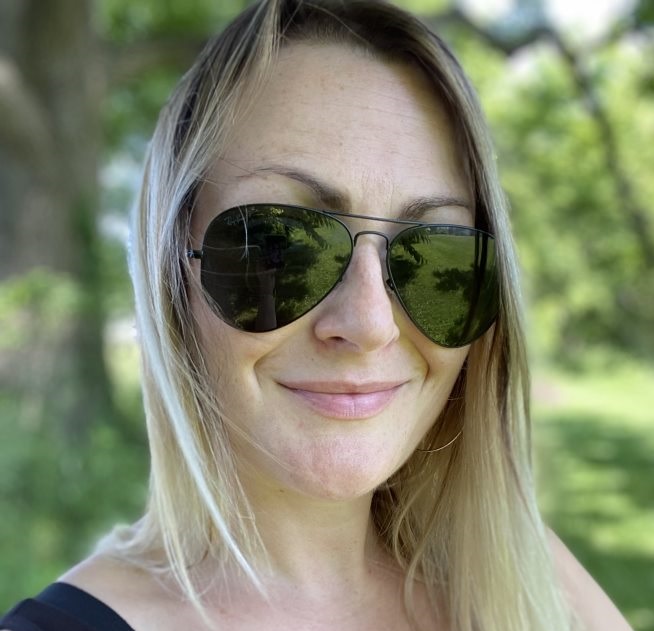
by Jessie Cooper | Jun 9, 2021
Last week I wrote to you about a new writer coming on to IABA to bring you content about autism and parenting. I wanted to let you know that my blogs have become my sacred space and I want to keep writing for me, hoping it serves you too. I believe my readers to be those who are looking to embrace their hearts and live their lives unapologetically and full of joy. I believe my readers are willing to look at pain, fear, shame, and guilt, and walk through it to bring understanding and shed light on what doesn’t serve them. This is hard as hell. It’s also totally worth it.
This week I want to write about my hope for you and me; our tribe. You see, my hope feels simple, yet I have felt damned from the time I was able to see it burning in my heart all those decades ago. I read a book to my boys recently titled “What Do You With An Idea?” In the book, a little boy keeps seeing an idea. The idea follows the boy and he ignores it. The boy is scared that other people will make fun of him for having this idea but the idea won’t go away. Eventually, the boy declares, “So what! This is my idea,” and goes on to learn that if you take care of your idea you can change the world.
I am not so bold to think that I can change the world with an idea but I am hopeful the world can change with collective ideas and actions. That we can all be as brave as the little boy in the story and honor ourselves and our ideas. Here is mine.
Choosing Kindness First
The hope and idea I have been living my entire life with is that humans can choose kindness first for themselves, then show it to others. That’s it. That’s my idea. I told you it feels simple, yet it ripped me apart for as long as I tried to embrace it. You see, I had a misconception of kindness and compassion because the world was telling me I was wrong. The world was defining what kindness looks like for a woman. Let me tell you what I was told. If you are a woman, maybe it even sounds familiar.
Kindness is noticing the needs of others. A good woman attends to the needs of others. Kindness is being polite. Do not speak in a harsh tone, raise your voice, swear, or insert your opinion where it may offend or even inconvenience others. Kindness is conforming; you do not want to make other people uncomfortable. Keep your appearance and demeanor in a way that does not offend. Kindness is being a polite little girl who grows up to be a good wife. A kind wife always listens to her husband. Men are, of course, here to protect us.
Fuck all that.
I read a book, “Brave, Not Perfect,” by Reshma Saujani, that talks extensively about the way in which society has indoctrinated women to be submissive. I shudder as I write the word ‘submissive.’ Ask my parents if they can put the word submissive and Jessie in a sentence. Nope. Not possible. Even though the US and many other countries have come a long way in some aspects, in many others it has not. We are still working against the narrative set by our white male forefathers over 200 years ago.
Shaping Our Future
Think about it. We have an entire political system that works on making amendments to words written exclusively by white men almost 250 years ago. While I would like to believe that there will be an awakening of some sort and that we are shifting toward a future for all, it’s not always easy to feel that way. When the pandemic hit and the tragedies in the black community came to our social forefront I thought to myself, “this is it, this is the bottom, people will wake up.” Some did. Some are using kindness and love to catapult us into a new future. Others continue to bring hate.
In speaking of my dream of kindness for all, the only perspectives I can write from are as a white woman and a mother in the US. I dare not and will not take the voice of the black community, LGBTQ, immigrants, or even men. I have not walked in their shoes and do not know what they were told to conform to or what they have experienced. But this I know to be true: every human being is born with the same worth. Let me say it again; baby, you are born worthy, you do not have to earn it.
As a woman, I tried desperately to earn value by following social norms while trying to fight these same norms. In my mind, I would stand bravely and push through a norm. Then I would fall back into shame. This constant push and pull was taking my life. This is how domestic violence overcame me.
Recognizing Abuse and Domestic Violence
Many people think that as a strong woman it’s not possible to experience, let alone live with, domestic violence and abuse. There is no way a strong or successful woman can live with abuse. I wish this was the case for me, but the truth is that at 34 years old I’m living without abuse in my life for the first time. Yes, I was strong and successful, but I also wanted to be kind and believe others were kind. That everyone is always kind at heart, even if they don’t show it. That when someone was abusing me they just needed a little more love to become the kind person they were born as. This would eventually spiral into, “why don’t they love me enough to stop!” Then I would get stuck. My version of kindness was killing me. Is it killing you?
In leaving domestic violence behind and working with an incredible trauma therapist, as well as having a loving support system, I am learning to apply my first belief about kindness; be kind to myself. This type of kindness takes from no one and offers a warm love to my soul that I’ve needed since the birth of my idea. I believe that if we are not kind to ourselves, which includes looking at ourselves (both the good and the bad), we cannot be kind to others. So I’m looking at myself and I’m asking myself to shed the narrative of kindness as submissive to become the woman I was born to be.
Cut the Noise Out
The world is a noisy place. When you stand up for yourself and what you need, remember that the crowd in the stands gets loud. You must be willing to block out the noise of the crowd to win the battle of your life. The battle to live free and unapologetically as yourself.
There is work to be done, systems that must fall, and people you must be ready to say goodbye to. We need to cut the noise out. But if you follow your heart home to yourself perhaps someday you’ll stand beside me in the ring. Perhaps we’ll build a kind world together.
Miracles and seen in the light, light and strength are one.
Xoxo,
Jessie
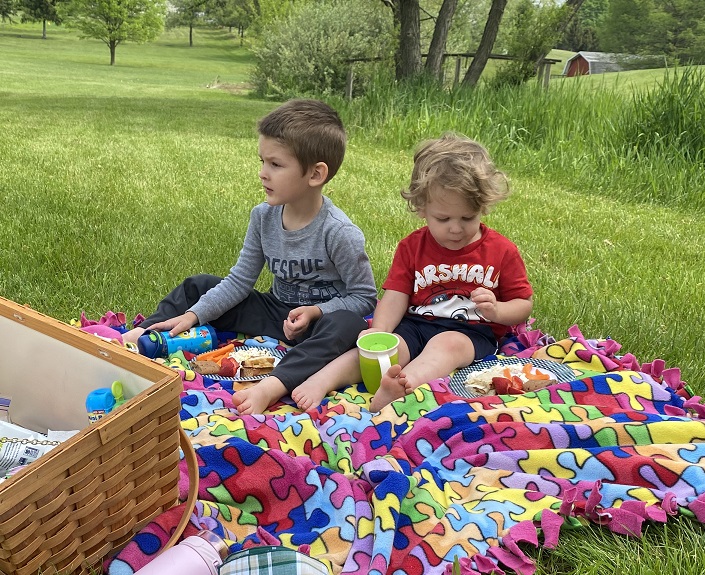
by Jessie Cooper | Jun 1, 2021
It’s been a little over a year since I started blogging. I was asked to start blogging by my marketing team to bring relevant information to our families. I was secretly waiting for this invitation because I’ve always wanted to be a writer and felt ashamed while thinking about “proper writing.” The invitation to write for you all quickly became therapy for me. The perfectionism that was holding me back was put down and writing has quickly become my favorite part of every week (outside of basement snuggles and coffee…).
When I began writing the blog I was focused on the services provided by Instructional ABA Consultants to support families of children with autism. I also wrote as a mama of two young children and one adopted teenager to let all mamas (and papas) out there know they are not alone. That even someone like me, an experienced clinician and CEO, has struggled with motherhood, tiny humans, and teenagers. Raising other humans is no easy feat and it takes a village of support and love. My hope was that my writing created a space of belonging for parents of both neurotypical children and children with autism.
Finding Myself During the COVID-19 Pandemic
As the pandemic hit in early 2020, I was not only burdened with running a company through a pandemic. I was also burdened with sheltering in place, taking care of my children, domestic violence, and the end of my marriage. I’ve alluded to the fact that I am a survivor of domestic violence. What I have not told you, however, is that I am one of the too many women who were (or are) not safe at home.
For a long while, I did not want to write this because I was ashamed. It’s not easy to identify domestic violence, let alone leave it behind. I was also fearful that anything and everything I wrote or said would be used in court against me. That by speaking up about my situation I would damage myself. There is much I will not say until I am ready, but please know this: I was not safe in my marriage. Neither were my children. I hold no ill will toward my ex-husband, but I absolutely believe abuse deserves accountability and that we all deserve to be safe. Writing about healing, alongside a community of support, helped show me the way out. I hope someday my writing will be a candle for others.
Shifting into a mindset where I can speak up (after 6 months of trauma-based therapy and more love than anyone can ask for) showed me that my current focus is shifting away from the original focus of my writing. I want to be able to continue to explore my own writing while not forgetting the part of my tribe who need online support for their children with autism and parenting. In a gentle way, I found it to be true that the content surrounding autism and parenting should be given to a writer who is currently more aligned with this topic. I also wanted to continue writing personally as a way to heal from trauma and live a life built in joy.
How did I decide what to do?
New Writings and Blogs
As usual, when I don’t know what to do, I went first to my gut, then to my team (tribe at home) and asked what to do.
This month my company will be splitting the blog section into two tabs. The first section will be for autism-related topics and family support. The second will be my writing, wherever that takes us. It is my hope that both blogs serve each community that receives them by being relevant to their respective topics.
Professionally, I continue as the CEO and owner of Instructional ABA Consultants serving children and adults with disabilities regardless of funding source. We have a clear mission and a badass team. Personally, I’m embracing the author I’ve always wanted to be and hoping my words bring peace, hope, joy, and connection to others.
May we all be happy, healthy, safe, and free.
Xoxo,
Jessie







